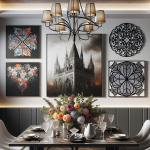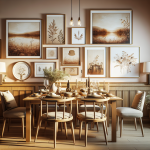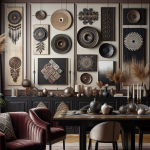Have you ever noticed how some of the most captivating cartoon characters lack distinct facial features? From the enigmatic silhouette of the Pink Panther to the mysterious smile of the Cheshire Cat, faceless characters have a unique appeal that draws us in and leaves us wanting more. What is it about these characters that make them so intriguing? Let’s delve into the fascinating world of faceless characters in cartoon portraits.
The Appeal of Faceless Characters
Faceless characters in cartoons have the ability to evoke a wide range of emotions and interpretations from the viewers. By removing facial features, artists create a sense of mystery and ambiguity that allows the audience to project their own feelings and experiences onto the character. This open-endedness invites viewers to engage with the character on a deeper level, sparking their imagination and leaving room for interpretation.
Additionally, faceless characters have a timeless quality that transcends trends and fads. Without specific facial features to anchor them to a particular era or style, these characters can exist in any time period or setting, making them relatable to audiences of all ages. This universality allows faceless characters to endure and resonate with viewers across generations.
The Role of Faceless Characters in Storytelling
Faceless characters play a crucial role in storytelling by serving as vessels for the audience’s emotions and experiences. Their lack of facial expressions allows viewers to project their own feelings onto the character, creating a more personal connection with the story. This emotional resonance can lead to a deeper and more meaningful engagement with the narrative, as viewers see themselves reflected in the character’s journey.
Furthermore, faceless characters can act as blank slates onto which artists can project a wide range of emotions and themes. By stripping away specific facial features, creators have the freedom to explore complex ideas and emotions without being limited by traditional expressions. This creative flexibility allows for a more nuanced and layered storytelling experience that challenges viewers to think critically and engage with the narrative on a deeper level.
The Symbolism of Faceless Characters
Faceless characters in cartoon portraits often carry symbolic significance that adds depth and complexity to their portrayal. The absence of facial features can represent anonymity, universality, or even a sense of detachment from the world around them. This symbolism allows artists to convey deeper themes and messages through the character’s design, creating a multi-layered and thought-provoking experience for the audience.
For example, the faceless silhouette of the Pink Panther embodies a sense of mysterious elegance and sophistication, while the enigmatic smile of the Cheshire Cat symbolizes whimsy and unpredictability. By using symbolism in their character design, artists can infuse their creations with deeper meaning and invite viewers to explore the underlying themes and messages of the story.
The Evolution of Faceless Characters
Faceless characters have a long history in the world of animation, dating back to the early days of silent films and vaudeville. In these early forms of entertainment, faceless characters were often used as comedic or surreal elements that added a sense of whimsy and fantasy to the storytelling. Over time, faceless characters have evolved to encompass a wider range of styles and genres, from the minimalist designs of modern cartoons to the intricate details of Japanese anime.
Today, faceless characters continue to captivate audiences with their unique charm and allure. From the iconic silhouette of Mickey Mouse to the enigmatic smile of Gru in “Despicable Me,” faceless characters have become an integral part of the animation landscape, beloved by viewers of all ages. Their ability to transcend time and trends makes them a timeless and enduring presence in the world of cartoons.
Embracing the Enigmatic
So, the next time you come across a faceless character in a cartoon portrait, take a moment to appreciate the enigmatic allure that they exude. From their mysterious silhouettes to their ambiguous expressions, faceless characters have a unique ability to captivate and engage viewers in ways that are both fascinating and thought-provoking. Embrace the mystery, and let your imagination run wild as you explore the intriguing world of faceless characters in animation.
Frequently Asked Questions
What are some famous examples of faceless characters in cartoons?
Some famous examples of faceless characters in cartoons include the Pink Panther, the Cheshire Cat from “Alice in Wonderland,” and Gru from “Despicable Me.” These characters have become iconic in their own right, captivating audiences with their enigmatic charm and timeless appeal.
Why do artists choose to create faceless characters in cartoon portraits?
Artists choose to create faceless characters in cartoon portraits for a variety of reasons, including the ability to evoke a wide range of emotions and interpretations from the viewers, the timeless quality that transcends trends and fads, and the symbolism that adds depth and complexity to the character’s portrayal. By removing facial features, artists can engage with audiences on a deeper level and invite them to explore the underlying themes and messages of the story.
How do faceless characters enhance storytelling in cartoons?
Faceless characters enhance storytelling in cartoons by serving as vessels for the audience’s emotions and experiences. Their lack of facial expressions allows viewers to project their own feelings onto the character, creating a more personal connection with the story. Additionally, faceless characters can act as blank slates onto which artists can project a wide range of emotions and themes, creating a more nuanced and layered storytelling experience that challenges viewers to think critically and engage with the narrative on a deeper level.








+ There are no comments
Add yours